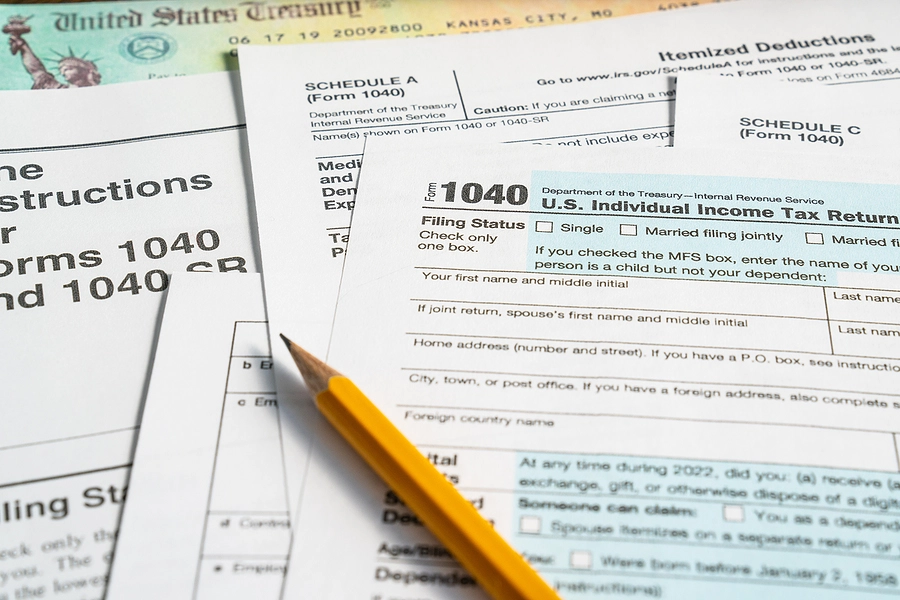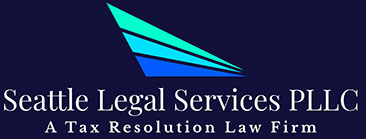How IRS Form 12277 Can Help Withdraw a Federal Tax Lien

If the IRS has placed a tax lien on your property, you may have suffered a number of unpleasant consequences, from an inability to sell your property and get loans to the significant amount of stress that comes with a tax lien. To reclaim your finances, it may be time to file IRS Form 12277 to resolve the lien and so you can get back on track. Keep reading to learn more about Form 12277 and how to move forward.
Overview of Tax Liens
The IRS may put a federal tax lien on your property when you fall behind on paying your federal taxes. A lien essentially gives the IRS a financial interest in your assets; it’s a legal claim that entitles the IRS to the profits from the sale of said asset in order to resolve your tax debt.
When the IRS Files a Lien
The IRS does not jump to filing a lien immediately when a taxpayer fails to pay their federal taxes. Placing a lien is time-consuming and expensive, and they generally move to this step only when every other collection attempt has failed. Prior to the IRS placing a lien on your property, they will send you a long list of notices telling you of your past due taxes, your tax liability, and their intent to place a lien.
The final step before a tax lien is a Notice of Federal Tax Lien. This is your final chance to request a CDP hearing to appeal the lien. It is crucial to take action immediately when the IRS notifies you of their intent to place a lien on your assets.
How a Lien Affects You and Your Property
A lien is a legal claim against your property. Once a lien is in place, the IRS has the right to seize your property, sell it, and use the proceeds to pay off your back taxes. In practice, a lien significantly limits the use of your property. Selling a property with a federal tax lien is a legal nightmare, and most buyers won’t even want to consider that option. Furthermore, a tax lien is a public record. So, even if it doesn’t directly affect your credit score, it can keep you from getting credit, securing a lease, renting a car, or even opening a new cell phone line.
What is Form 12277?
Form 12277 is a request to withdraw a tax lien. It collects your identifying information, information about the Form 668(Y) you received, and why you believe the lien should be withdrawn.
The withdrawal of a tax lien means that the lien is entirely removed from public records. The IRS should automatically withdraw the lien once you pay the tax debt in full, but if they don’t, you can request a withdrawal. However, there are circumstances under which you can request withdrawal of a tax lien even if it is not paid off yet. It’s important to note that even if a tax lien is withdrawn, you can still be liable for the amount owed unless the IRS tells you otherwise.
As you navigate tax liens, it’s important to understand the difference between the release and the withdrawal of a tax lien. After you pay your tax debt off, the IRS automatically releases your tax lien. This means that your obligation to them is fulfilled, but the lien may still be in the public records.
Qualifications to File Form 12277
The IRS may allow for the withdrawal of a tax lien if you meet specific circumstances. First, if your tax liability has been resolved and the lien is released, you may qualify for withdrawal if:
- You have filed your past three tax returns on time
- You are up-to-date on estimated tax payments and federal tax deposits if you are required to pay them
If you are requesting withdrawal of an NFTL but you have not yet paid off your tax lien, the IRS may agree to the withdrawal if you set up an installment agreement with Direct Debit payments. Other requirements include:
- You are a qualifying taxpayer (either an individual taxpayer or a business that only owes income taxes).
- You currently owe $25,000 or less; you can also meet this requirement by paying down your higher balance to $25,000 or less.
- Your Direct Debit agreement must result in full payment within 60 months or prior to expiration of the Collection Statute, whichever occurs first.
- You are in compliance with all filing and payment requirements.
- You have made three direct debit payments in a row.
- You have not defaulted on this or any other Direct Debit installment agreement.
What to Do If You’re Not Eligible to Use Form 12277
If you cannot request a withdrawal with Form 12277, there are other options you may want to consider. A discharge takes the lien off of a specific property, which may help if you are attempting to sell the property. Subordination lets other creditors’ interests move ahead of the IRS’s interests, which can help you secure credit. If you’re named on the NFTL but you don’t actually owe the taxes, you can apply for a Certificate of Non-Attachment.
Some taxpayers choose to wait for the lien to expire. This generally happens 10 years after the date of assessment, unless the IRS renews it. This is not usually the best option, as the lien remains in the public record, and you may be unable to sell the asset or secure new lines of credit for a full decade.
Some taxpayers clear their tax debts via bankruptcy. This is often recommended only as a last resort, as it has a massive impact on your credit score, may result in the loss of your assets, and can affect your financial well-being for years to come.
How to Fill Out Form 12277
If you are ready to request the withdrawal of a federal tax lien, you can download Form 12277 and begin filling it out.
The Application Process
In sections 1 through 8 of the form, you list your identifying information, including your name, address, SSN, and phone number. If you are filing for a business or as the representative of a taxpayer, add your name and title in number 3.
Section 9 refers to your Form 668(Y). You can either attach the form or answer the questions asked in this section if you do not have the original form available. In section 10, indicate the current status of your federal tax lien.
Section 11 is where many taxpayers get confused. You have to indicate your reason for requesting a withdrawal. Your options include:
- The NFTL was filed prematurely or outside of IRS procedures
- You have an installment agreement for the liability in question and your agreement does not require an NFTL
- Withdrawing the lien will make it easier for you to pay the tax debt
- Withdrawal is in the best interest of the taxpayer and the government
Most applications fall into the fourth category, which is broad enough to allow for a wide number of reasons for withdrawal. Regardless of which reason is relevant for your case, it’s important to include appropriate and substantial documentation showing why the IRS should agree to your request. Section 12 gives you space to explain your reasons for the withdrawal request. You can also include supporting documentation. After signing the form, you are done.
What to Expect Next
After you send the form to the IRS office that is handling your account, an IRS representative will process your application. They may request additional information if necessary. If they agree to withdraw the NFTL, they will file Form 10916(c) and send you a copy. If they do not withdraw the NFTL, they will provide additional information on your appeal options.
Potential Issues and Solutions
Taxpayers may run into a number of problems when trying to have a lien withdrawn from their property. Preparing ahead of time and ensuring that you submit complete and accurate documentation can help you avoid these hurdles.
Failure to Respond to Requests for Information
If you submit Form 12277, it’s crucial that you watch for any further correspondence from the IRS. They may need additional information to determine whether or not to withdraw your lien. Ignoring or not responding to their requests may lead to your request being denied.
Inaccurate or Missing Information
Ensure that Form 12277 is filled out accurately and completely. Providing accurate information regarding the lien and where it was filed can streamline the processing of your application. Skipping spots on the form or withholding information may result in denial.
Inadequate Explanation in Section 12
Section 12 is your opportunity to explain why the IRS should agree to withdraw a lien. Brief explanations or explanations without supporting documentation may lead to a quick denial. Provide all information and documentation the IRS needs to make a decision.
Impact of Lien Withdrawal
When a lien is withdrawn, you may find it easier to secure new lines of credit, get competitive interest rates on existing lines of credit, and work in certain fields. You may also find it easier to sell or refinance your property since creditors know they do not have to fight the IRS to get what they are owed.
Do You Need Further Assistance?
A lien is one of the most serious outcomes of unpaid taxes or unfiled tax returns. Navigating the release or withdrawal of a tax lien is often easier with the assistance of an experienced tax professional. If you’re concerned about your finances and your property, it’s time to reach out to the team at Seattle Legal Services. We’re here to help you navigate your most complex and stress-inducing tax issues. Call us at 205-536-3152 or fill out our online contact form to set up a consultation.
